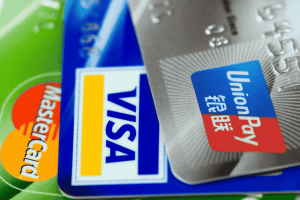In today’s digital world, financial scams are everywhere—lurking in emails, social media, phone calls, and even text messages. If you’re managing your money online or using digital banking, you’re a target. But don’t worry: with a sharp eye and the right knowledge, you can spot a scam before it does any damage to your wallet.
Let’s dive into how you can protect yourself, your savings, and your peace of mind from the ever-evolving tricks of financial scammers.
Why You Need to Be Scam-Savvy

Scammers are getting smarter, using technology and psychology to trick even the most cautious people. Falling for a scam can mean losing your hard-earned money, having your identity stolen, or facing months of stress trying to recover your losses.
But here’s the good news: Most scams follow familiar patterns. If you know what to look for, you can avoid becoming a victim.
The Most Common Types of Financial Scams
Before you can spot a scam, you need to know what you’re up against. Here are some of the most common financial scams targeting everyday people:
- Phishing Emails and Messages: Fake emails or texts pretending to be from your bank, asking you to “verify” your details.
- Investment Scams: Promises of high returns with little or no risk—often through fake websites or social media ads.
- Romance Scams: Scammers build fake relationships online and then ask for money.
- Lottery or Prize Scams: You’re told you’ve won a prize, but you need to pay a fee to claim it.
- Impersonation Scams: Someone pretends to be a government official, police officer, or even a friend in trouble.
- Fake Shopping Sites: Websites that look real but steal your payment info or never deliver your purchase.
Red Flags: How to Recognize a Financial Scam
Being able to spot a scam quickly is crucial to protecting your money and personal information. Familiarize yourself with these common warning signs:
1. Urgency and Pressure
Scammers create a false sense of urgency to make you act impulsively, before you have a chance to think things through or seek advice. Phrases like “Act now or miss out” or threats of immediate consequences are classic tactics designed to rush your decisions.
2. Requests for Personal or Financial Information
Legitimate organizations will never ask you to provide sensitive information—such as passwords, PINs, full credit card numbers, or social security numbers—via unsolicited emails, texts, or phone calls. If someone asks for these details, it’s almost always a scam.
3. Offers That Are Too Good to Be True
Be skeptical of promises like guaranteed investment returns, huge discounts, or free money offers. Scammers use these tempting claims to lure victims, but in reality, there’s no such thing as easy, risk-free gains.
4. Unusual Payment Methods
Scammers often demand payment through hard-to-trace methods like gift cards, wire transfers, or cryptocurrencies. Unlike credit card payments or bank transfers, these methods offer little chance of recovery if you fall victim.
5. Poor Grammar and Spelling
Professional companies usually proofread their communications carefully. Scam messages often contain spelling mistakes, awkward phrasing, or inconsistent formatting—red flags indicating a fraudulent source.
6. Suspicious Links or Attachments
Never click on links or download attachments from unknown or unexpected sources. These may contain malware designed to steal your personal data or compromise your device’s security.
7. Unsolicited Contact
Be wary of unexpected calls, emails, or messages, especially those involving money. Scammers frequently impersonate banks, government agencies, or reputable companies to gain your trust. Always verify the identity of the contact through official channels before sharing any information.
Practical Steps to Protect Yourself

Now that you know the warning signs of a scam, it’s crucial to take proactive measures to protect yourself. Follow these key practices to stay secure:
Verify Before You Trust: Always double-check the sender’s email address, phone number, or website URL. Scammers often create fake contacts that look very similar to legitimate ones. If you receive a suspicious message claiming to be from your bank or another trusted institution, don’t use the contact information provided in that message. Instead, call the official customer service number listed on the company’s website or your bank statement to confirm the legitimacy of the request.
Never Share Sensitive Information: Avoid sharing passwords, PINs, one-time security codes, or any other confidential details with anyone—no matter how convincing they sound. Legitimate banks or companies will never ask you to disclose this kind of information via phone calls, emails, text messages, or online chats. Treat any such requests as red flags.
Use Strong, Unique Passwords for Every Account: Avoid using the same password across multiple accounts. Instead, create strong passwords that combine letters, numbers, and symbols. Consider using a trusted password manager to securely generate, store, and autofill your passwords, making it easier to maintain strong, unique credentials without the risk of forgetting them.
Enable Two-Factor Authentication (2FA): Add an extra layer of security by enabling two-factor authentication on all your important accounts. This means even if someone manages to steal your password, they will also need access to your phone or authentication app to log in, greatly reducing the risk of unauthorized access.
Keep Your Devices and Software Updated: Cybercriminals often exploit security vulnerabilities in outdated software. Regularly update your phone, computer, browsers, and apps to ensure you have the latest security patches and protection against new threats.
Monitor Your Accounts Regularly: Make it a habit to review your bank and credit card statements frequently. Look out for any transactions you don’t recognize or that seem unusual. Many banks allow you to set up real-time alerts for large purchases or atypical account activity—take advantage of these features to catch suspicious behavior early.
Report Suspicious Activity Immediately: If you suspect you’ve been targeted by a scam or notice unauthorized transactions, contact your bank or financial institution immediately to freeze your accounts and limit potential damage. Additionally, report the scam to local law enforcement and consumer protection agencies to help prevent others from falling victim.
Real-Life Examples: Learn from Others’ Mistakes
Example 1: The “Bank Alert” SMS
Imagine receiving a sudden text message claiming your bank account has been locked for security reasons. The message urges you to click a link and enter your login details immediately. This is a classic scam. Red flag: Legitimate banks never request sensitive information through unsolicited texts or emails. If you click the link and provide your credentials, scammers can steal your login and quickly empty your account.
Example 2: The “Too-Good-To-Be-True” Investment
You come across a social media ad promising to double your money within a month. The website looks professional and trustworthy, so you decide to invest. However, after sending your money, the company suddenly disappears without a trace. Red flag: Guarantees of high or quick returns with little or no risk are almost always scams designed to lure unsuspecting victims.
Example 3: The “Friend in Trouble” Scam
You receive an urgent message from what appears to be a close friend claiming they’re stranded abroad and need emergency funds to get home. Feeling compelled to help, you prepare to send money. But when you call your friend’s usual phone number, you find they are safe and unaware of the messages. Red flag: Scammers often hack social media or messaging accounts to impersonate people you trust and exploit your goodwill.
Quick Checklist: Is It a Scam?
- Are you being pressured to act quickly without time to think?
- Is someone asking for personal or financial information that seems unnecessary?
- Does the offer sound too good to be true, such as guaranteed high returns?
- Are you being asked to pay using unusual or hard-to-trace methods like gift cards or cryptocurrency?
- Are there spelling, grammar, or formatting errors in the message?
- Did the contact come unexpectedly or out of the blue?
If you answered “yes” to any of these, stop and investigate further!
What to Do If You’ve Been Scammed
- If you realize you’ve fallen victim to a scam, acting quickly can help minimize damage and increase your chances of recovery. Here’s what you should do immediately:
- Contact Your Bank or Card Provider
Get in touch with your bank, credit card company, or payment provider as soon as possible. Inform them about the fraudulent transaction or suspicious activity. They can freeze your accounts, block your cards, and may initiate a process to recover lost funds. - Change Your Passwords and Security Settings
Update passwords on all affected accounts, especially those linked to your finances, email, and phone. If you use the same password elsewhere, change those too. Enable two-factor authentication (2FA) wherever possible to add an extra layer of security. - Report the Scam to Authorities
File a report with your local police department or cybercrime unit. Additionally, notify consumer protection agencies or financial regulatory bodies in your country. Reporting helps authorities track scam trends and may assist in investigations. - Warn Friends and Family
Scammers often target the victims’ contacts next. Inform your friends and family about the scam so they can be vigilant and avoid falling prey to similar schemes. Sharing your experience raises awareness and protects others. - Monitor Your Accounts Closely
Keep a close eye on your bank statements, credit reports, and online accounts for any unusual or unauthorized activity. Promptly report anything suspicious.
Conclusion: Stay One Step Ahead of Scammers

Financial scams are constantly evolving, but so are your defenses. By staying vigilant, trusting your instincts, and applying the practical tips shared here, you empower yourself to safeguard both your finances and your peace of mind.
Have you encountered a scam recently? Sharing your experience or advice in the comments can make a real difference—your story might help someone else avoid a costly pitfall.
If you found this guide helpful, please share it with your friends and family. Together, we can build a stronger community, outsmart scammers, and protect what matters most.









